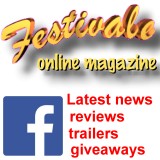Autumn 2015
My Virtual World of Digital Memories
A friend and I often hit a wall where my virtual experiences conflict with his preference for the tangible. I read e-books. He reads paper books. I scan, he stores.
Let me confess to being a hoarder. I acquired boxes of newspaper clippings for story ideas, and just plain interest. I kept christmas cards and birthday cards, postcards of places I've been and old school notes.
But, life intervenes. I lost my collection of comic books in one move, all but one of my precious 1950s and 1960s humour novels in another. An illness meant that I had to dramatically cull my papers in anticipation of an extended hospital stay.
Over the years I've moved as often as every three years, and that called for every increasingly large trucks and months of packing. Cull as I might the sheer weight and bulk of my books demanded insurance, extra rental for the library and general maintenance. My catalogue, first on cards and then in a database was a labour of love.
The result is that I've had to adjust to losses, and to find ways to minimise them. I have almost every email I've every sent or received since the 1990s. I have receipts, warranties, instruction manuals, recipes and story notes scanned and in some cases converted to text with OCR (Optical Character Recognition). I also have a programme of regularly refreshing my disk copies because CDs and DVDs have an expected life span of 12 years maximum, but critical information should be recopied as often and every year.
This isn't as cold as you might think. I still live amongst piles of books, computer parts, art supplies, craft supplies and more, but my memory is often digital.
In an earlier issue of Festivale I documented how I use a rotating screensaver and a rotating wallpaper program to put my memories and favourite image collections on my screens. Every day I see everything from old birthday cards or photos to ticket stubs and cartoons (see Virtual Albums and Notice boards).
For this digitisation I rely on a piece of equipment that has fallen somewhat out of favour -- the colour scanner. I scan everything I want to keep. And yes, I'm pretty tough with myself about filing - financial records by date, images by subject/date, research by subject. The more you have the more you have to keep on top of it.
For families, digital memories can include video and voice recordings of family members telling stories as well as the more usual videos of family events.
Whatever your digital memories, the key is to protect them. One copy is not enough. Unlike tapes and negatives and other like materials, digital copies are exact, there is no generational loss, so you can make one copy or ten without losing resolution and colour. Keeping extra copies at another address is vital for businesses (large and small), but it is also worth while for family records. Families can have a couple of official archivists who keep copies of discs full of memories.
Keeping copies of your important files at an 'offsite' location is a good practice against fire or water damage, even theft. Keeping copies of your memories protects them and can even encourage the spread of family lore.
Finding ways to bring your digital memories into your daily life enriches your days and the emotions that they evoke are as real from virtual objects as from the tangible, fragile objects that you have filed away in albums and shoe boxes.

Ali Kayn is the editor and founder of Festivale Online Magazine and a regular contributor.
For more features, columns and reviews by Ali Kayn, use the site search box.
For posts about Melbourne events, places, news, reviews, giveaways, see our Facebook Page:






 Published in Melbourne, Victoria, Australia
Published in Melbourne, Victoria, Australia